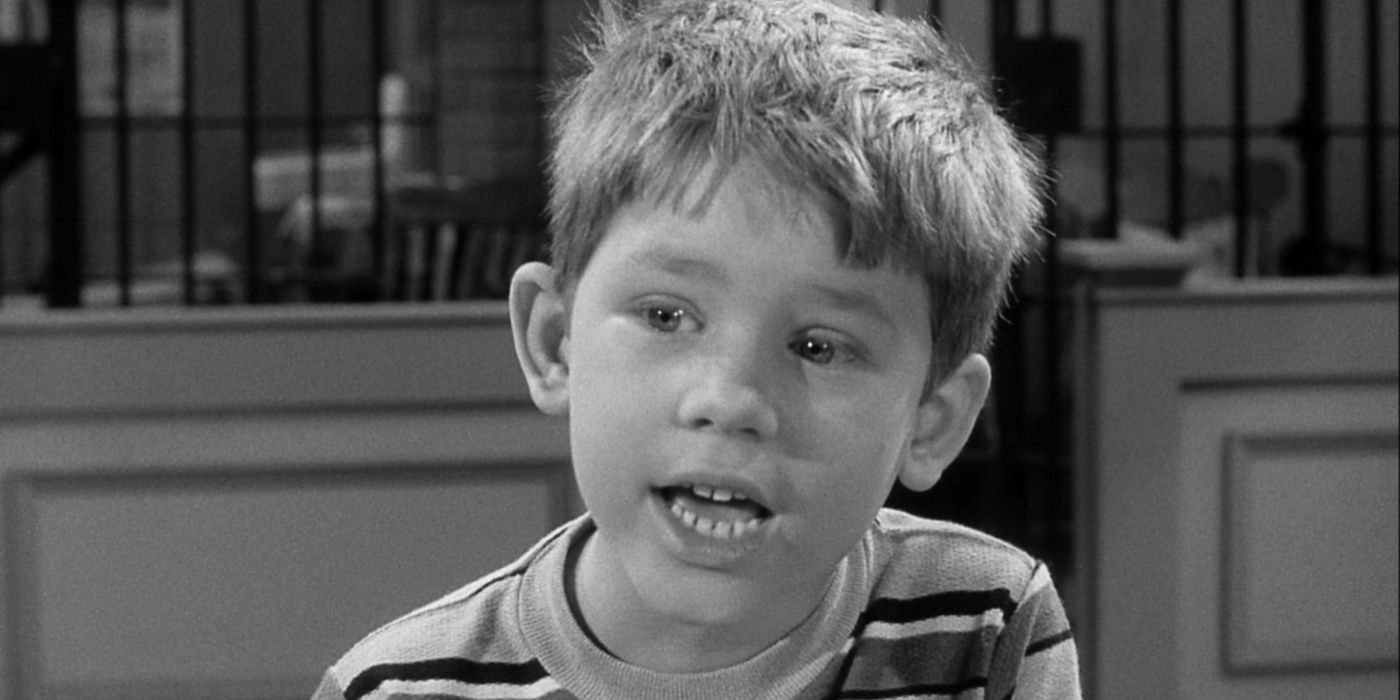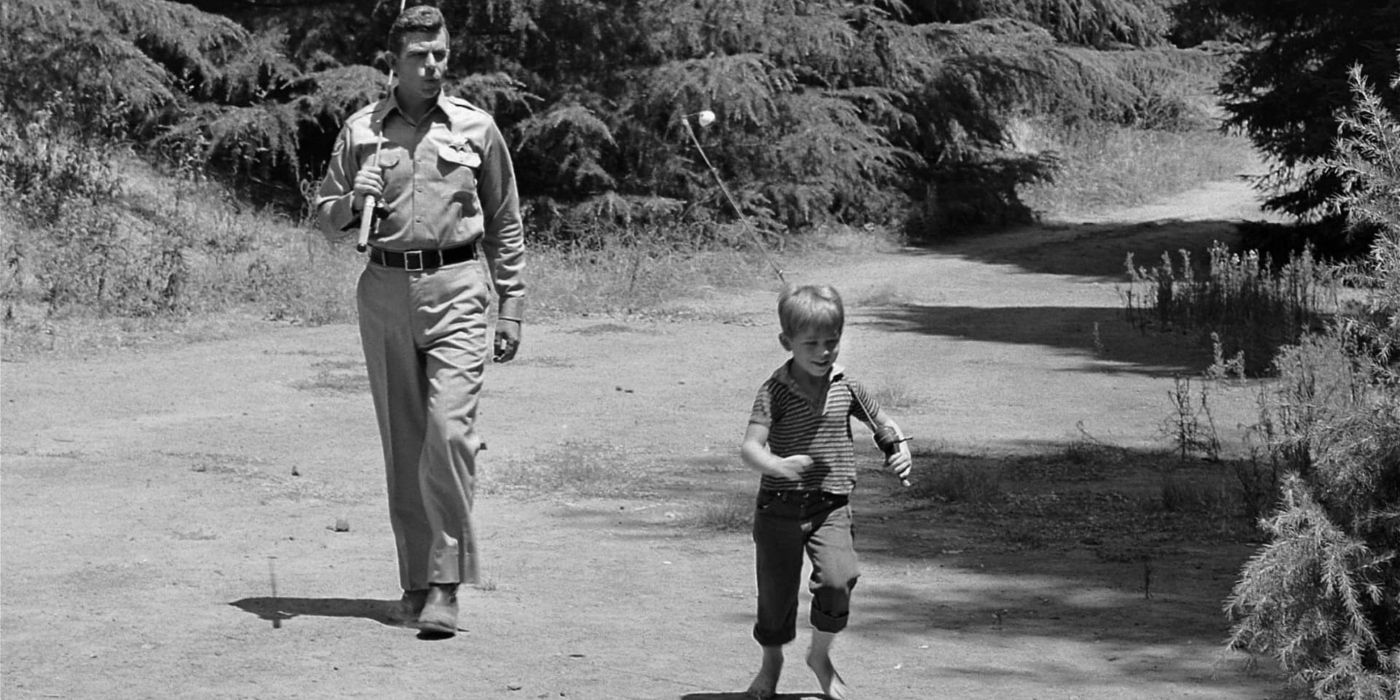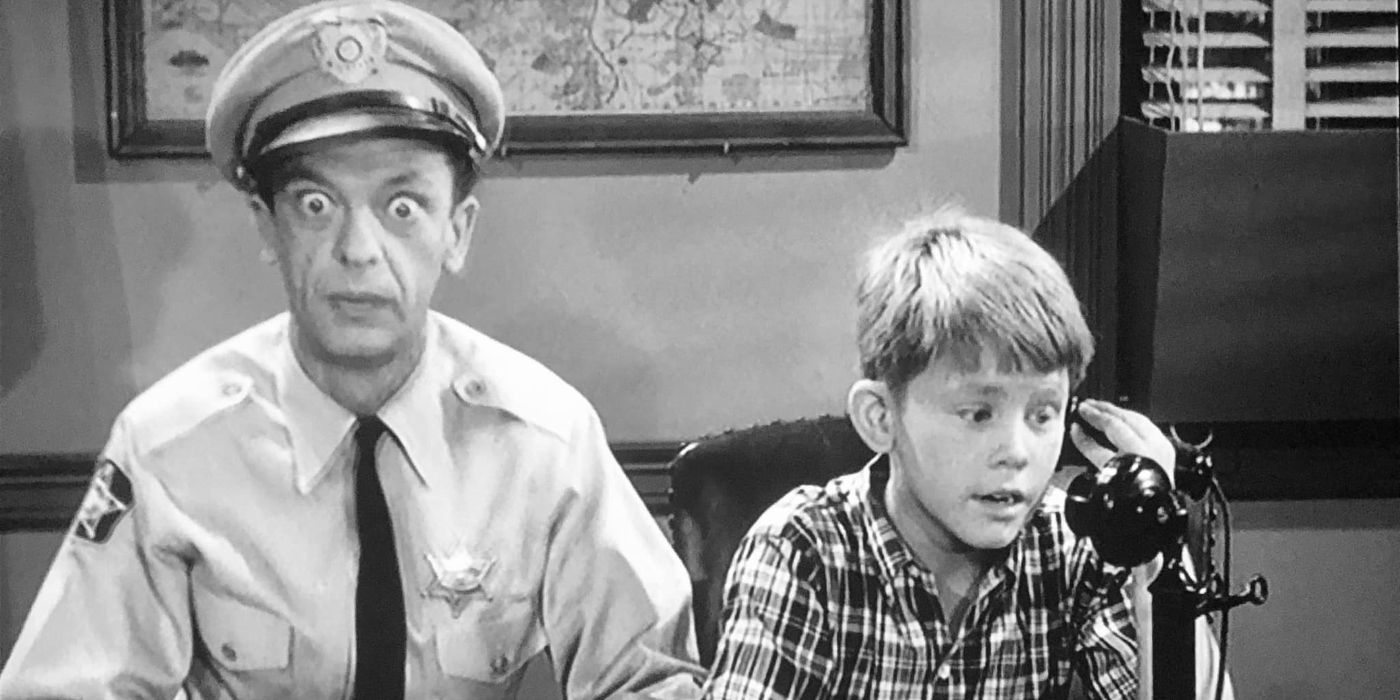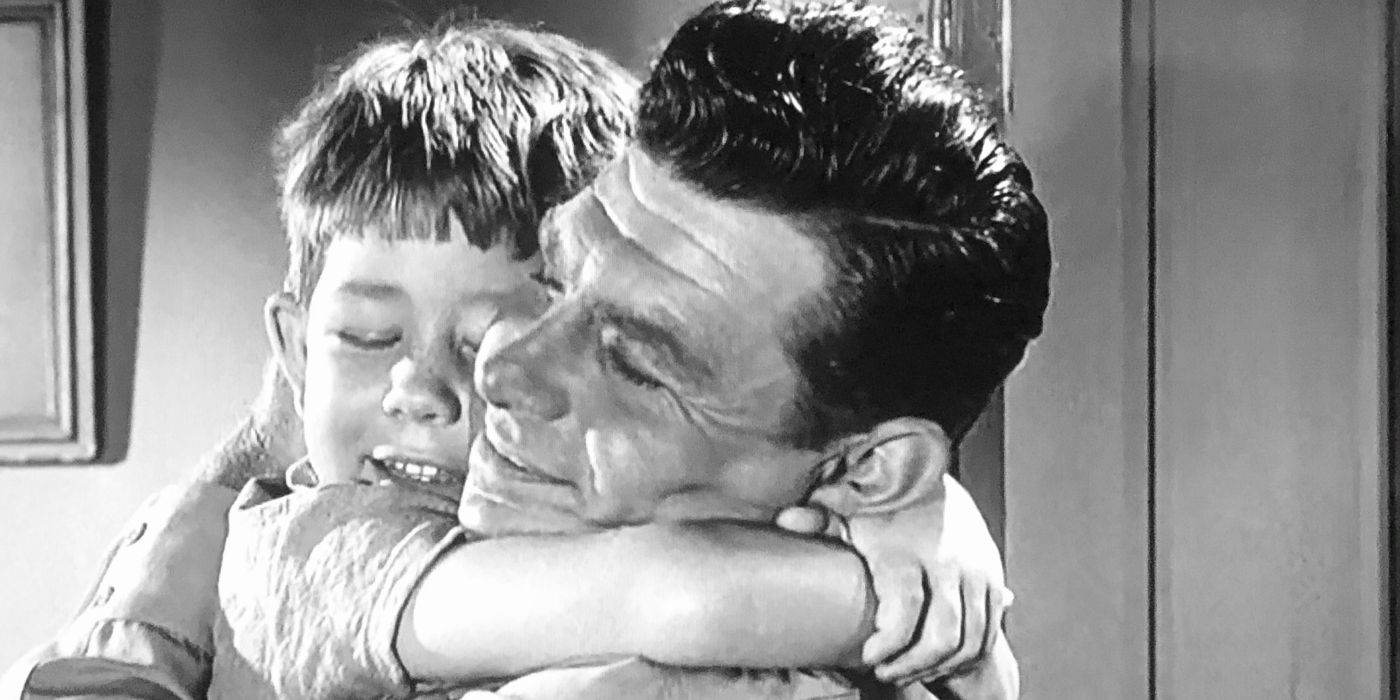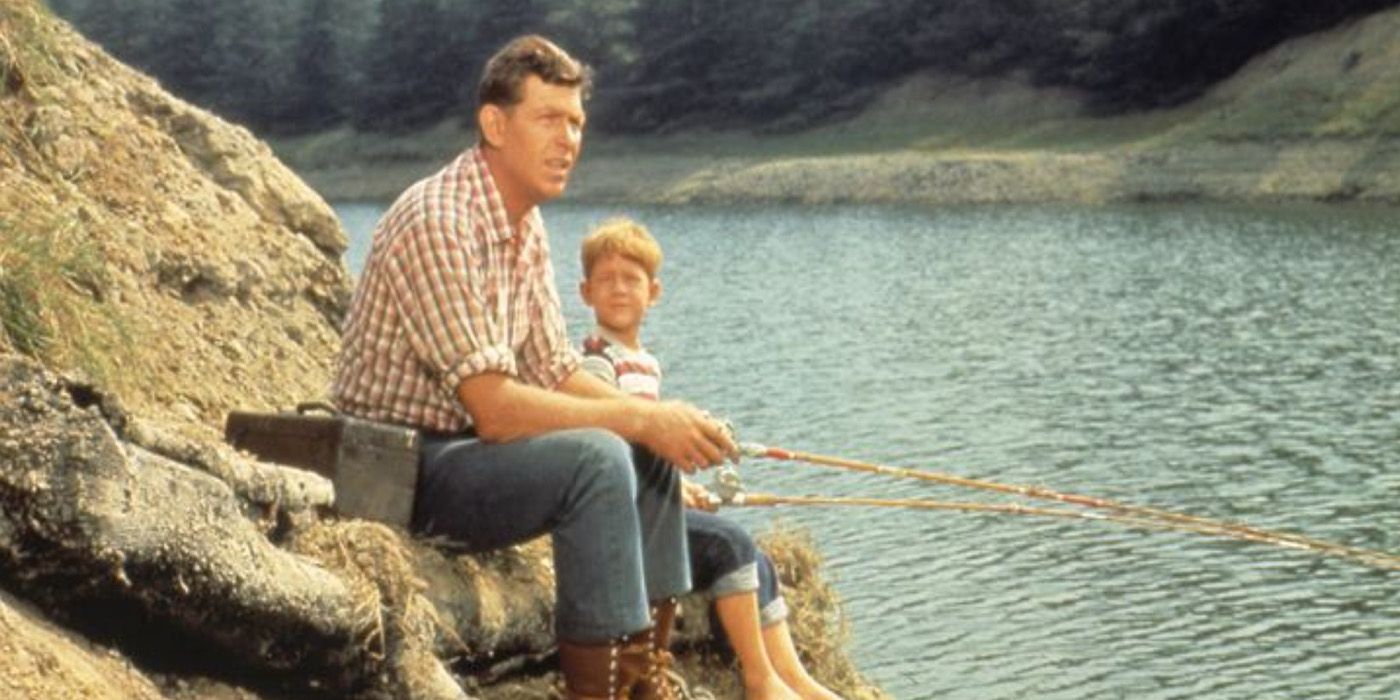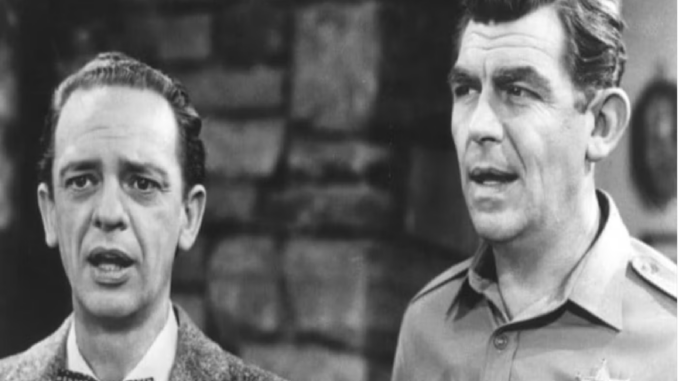
Few shows are as beloved as The Andy Griffith Show. The heartwarming classic was a steady hit for CBS. In its entire run, it never placed lower than seventh place in the ratings; it even ended its final season in the number one spot. Although it was a favorite for television viewers back in the day, the sitcom still continues to earn new fans with syndicated reruns airing on cable channels like TVLand and streaming on Paramount+. Through these avenues, the series gets to live on as new generations discover the magic of the fictional town of Mayberry.
The Danny Thomas Show served as a jumping off point for The Andy Griffith Show. The character of Sheriff Andy Taylor (Andy Griffith) was introduced to television viewers when he arrests Thomas for running a stop sign in a February 1960 episode of Thomas’ show. The spinoff debuted in October of that same year, and in over 249 episodes (159 in black and white and 90 in color for Seasons 6-8), audiences fell in love with the wholesome characters of Andy and his family. Each episode sees the honest, ethical, and all-around good guy raising his son, Opie (Ron Howard), with the help of his Aunt Bee (Frances Bavier) and his inept but lovable cousin, Deputy Barney Fife (Don Knotts). The community of Mayberry provides plenty of challenges for Andy, but every situation is met with common-sense problem-solving and a compassionate approach to dealing with everyone in the community. When people think back to a simpler, less stressful time in American history, the world of The Andy Griffith Show comes to mind. But one element of the series was actually going to be much different when the show was first conceived.
Opie Was Supposed To Be a Wisecracking Kid on ‘The Andy Griffith Show’
In the days of classic television in the 1950s, most children were portrayed in one defined way. In shows such as Leave It To Beaver, Dennis the Menace, and The Danny Thomas Show itself, kids were precocious and often leaned heavily into their bratty sides. These rascals were constantly getting into mischief, popping onscreen to say something snarky to their parents or to complain about whatever predicament they had placed themselves in. Generally, they were suffering from Annoying Kid Syndrome. A very specific type of child was depicted onscreen, andthese actors were also often typecast into roles where they showed off their wisecracking ways. Although this type created some memorable characters (including Beaver Cleaver and Eddie Haskell), they weren’t exactly endearing to their parents or to the audiences watching them.
When Thomas and Sheldon Leonard (who also produced The Dick Van Dyke Show) came up with the concept of the show, the character of Opie was set to continue with this trend of facetious and irreverent behaviors. Howard’s father, an actor named Rance Howard, was the one who helped land Ron the part of Opie. Ron was just six years old at the time, but his father was sure he could take on the role effectively. However, Rance had some qualms about the part of Opie and how he would interact with Andy in their father/son relationship. Rance’s influence would actually help change the course of the development of the Opie character and The Andy Griffith Show for the better.
Ron Howard’s Father Helped Mold His Son’s ‘Andy Griffith Show’ Character
In a recent interview on Conan O’Brien Needs a Friend, Ron notes that his father believed that the character of Opie had the potential to be a much sweeter and well-mannered boy. He says that his father “took it upon himself to just go up quietly to Andy at one point and say, ‘Now I see they’re writing Opie kind of the way they write the Rusty Hamer character on Danny Thomas.’ And like so many shows, where he’s a wise ass. And he said, ‘You know, Ronnie can do that and everything, but what if he actually respected his father?'” Griffith took his suggestion under consideration and realized this switch-up would be incredibly beneficial for the show and the heartwarming, family-friendly story they were trying to tell. Ron didn’t even know about this interference from his father until years later, when he and Griffith were shooting a Mayberry-related project, and Griffith described the behind-the-scenes process to him.
Changing Opie from a brat to a sweet boy (who still makes mistakes but owns up to them) created what the show needed to portray an endearing and believable connection between father and son. With this alteration to his personality, Opie is a much more realistic child. He might get into trouble in pretty much every episode, but he looks up to his father and is never willfully misbehaving. Without Rance’s push, the relationship between Andy and Opie would have been far less loving, and the air of kindness and heart running throughout the series would have been lacking. It’s also a sign that the creative process for the series was allowed to be collaborative, where thoughtful suggestions were taken into account and incorporated in an authentic way.
Perhaps this edit to Opie’s character is also why Ron Howard was able to escape the dreaded child actor curse. He was permitted to act as a child with respect and deference onscreen and off, which could be why he has gone on to have such an illustrious career. After the show ended when Ron Howard was 14 years old, he went on to star in other projects such as Happy Days and American Graffiti. He has also earned Hollywood’s respect by directing acclaimed movies such as Apollo 13, A Beautiful Mind (for which he won an Oscar), and Frost/Nixon. Although he started as a young Opie, Ron Howards’s father’s intuition about what he was capable of changed the trajectory of his career, as well as that of The Andy Griffith Show itself.
The series showcased one of the most touching father/son relationships onscreen, but now, with these remarks from Ron Howard, fans can see that the real-life connection between a boy and his dad also impacted the show in a major way. Ron Howard’s remembrances of The Andy Griffith Show are a fascinating insight into how this classic television show was brought to life. The behind-the-scenes details about his father’s contributions to his character (and the series at large) offer a clue as to why it’s still so beloved many years later.
The Andy Griffith Show is now streaming on Paramount+ in the U.S.
